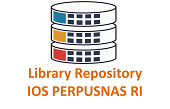Pengaruh Perceived Ease Of Use Dan Perceived Usefulness Terhadap Behavioral Intention Penggunaan Gopay Dengan Social Influence Sebagai Moderasi
Abstract
Mobile payment semakin banyak digunakan masyarakat karena memberi kemudahan dalam bertransaksi terutama ketika pandemi Covid-19 melanda dunia. Penelitian ini bertujuan untuk menganalisis pengaruh perceived ease of use dan perceived usefulness terhadap behavioral intention dalam menggunakan m-payment, GoPay dengan Social Influence sebagai variabel pemoderasi. Metode analisis data yang digunakan adalah uji regresi linier berganda dan Moderated Regression Analysis (MRA) dengan 180 responden. Data diolah menggunakan IBM SPSS Statistics 25. Berdasarkan hasil analisis data ditemukan bahwa perceived usefulness mempengaruhi behavioral intention untuk menggunakan GoPay, namun perceived ease of use tidak mempengaruhi behavioral intention untuk menggunakan GoPay, sedangakan social influence tidak cukup kuat untuk memoderasi hubungan perceived ease of use dan perceived usefulness dengan behavioral intention dalam menggunakan GoPay.
Downloads
References
[2] Gojek. (2021). Gopay. Retrieved October 17, 2021, from https://www.gojek.com/gopay/
[3] Populix. (2022). Consumer Preference Towards Banking and E-Wallet Apps Jakarta.
[4] Kominfo. (2020). Penggunaan internet naik 40% saat bekerja dan belajar dari rumah. Retrieved May 18, 2022, from https://kominfo.go.id/content/detail/25881/penggunaan-internet-naik-40- saat-bekerja-dan-belajar-dari-rumah/0/berita_satker
[5] Zhao, Y., & Bacao, F. (2021). How does the pandemic facilitate mobile payment? An investigation on users’ perspective under the COVID-19 pandemic. International Journal of Environmental Research and Public Health, 18(3), 1–22. https://doi.org/10.3390/ijerph18031016
[6] Leong, C. M., Tan, K. L., Puah, C. H., & Chong, S. M. (2021). Predicting mobile network operators users m-payment intention. European Business Review, 33(1). https://doi.org/10.1108/EBR-10-2019-026
[7] She, L., Rasiah, R., Turner, J. J., Guptan, V., & Sharif Nia, H. (2022). Psychological beliefs and financial well-being among working adults: the mediating role of financial behaviour. International Journal of Social Economics, 49(2), 190–209. https://doi.org/10.1108/IJSE-07-2021-0389
[8] Rahman, M., Isa, C. R., Masud, M. M., Sarker, M., & Chowdhury, N. T. (2021). The role of financial behaviour, financial literacy, and financial stress in explaining the financial well-being of B40 group in Malaysia. Future Business Journal, 7(1), 1–18. https://doi.org/10.1186/s43093-021-00099-0
[9] Davis, F. D. (1989). Perceived Usefulness, Perceived Ease of Use, and User Acceptance of Information Technology. MIS Quarterly, Vol. 13, No. 3 (Sep., 1989), pp. 319-340
[10] Fatmawati, E. (2015). Technology Acceptance Model (TAM) untuk Menganalisis Sistem Informasi Perpustakaan. Iqra’: Jurnal Perpustakaan Dan Informasi, 9(1), 1–13. Retrieved from http://jurnal.uinsu.ac.id/index.php/iqra/article/view/66
[11] Koenig-Lewis, N., Marquet, M., Palmer, A., & Zhao, A. L. (2015). Enjoyment and social influence: predicting mobile payment adoption. Service Industries Journal, 35(10), 537–554. https://doi.org/10.1080/02642069.2015.1043278
[12] Viswanath, V., Morris, M.G., Davis G.B., and Davis, F.D. (2003). Acceptance of Information Technology: Toward a Unified View. MIS Quarterly, Vol. 27, No. 3 (Sep., 2003), pp. 425-478
[13] Handayani, T., & Sudiana, S. (2017). Analisis Penerapan Model Utaut (Unified Theory of Acceptance and Use of Technology) Terhadap Perilaku Pengguna Sistem Informasi (Studi Kasus: Sistem Informasi Akademik Pada Sttnas Yogyakarta). Angkasa: Jurnal Ilmiah Bidang Teknologi, 7(2), 165. https://doi.org/10.28989/angkasa.v7i2.159
[14] Mahande, R. D. (2018). UTAUT Model: Suatu Pendekatan Evaluasi Penerimaan E-Learning pada Program Pascasarjana. Prosiding Seminar Nasional Membangun Indonesia Melalui Hasil Riset, 784–788. Retrieved from 10.31227/osf.io/254j7

This work is licensed under a Creative Commons Attribution 4.0 International License.







_uk501.png)

.2022-2026_uk200_pxl_.jpg)















.png)
3.png)


